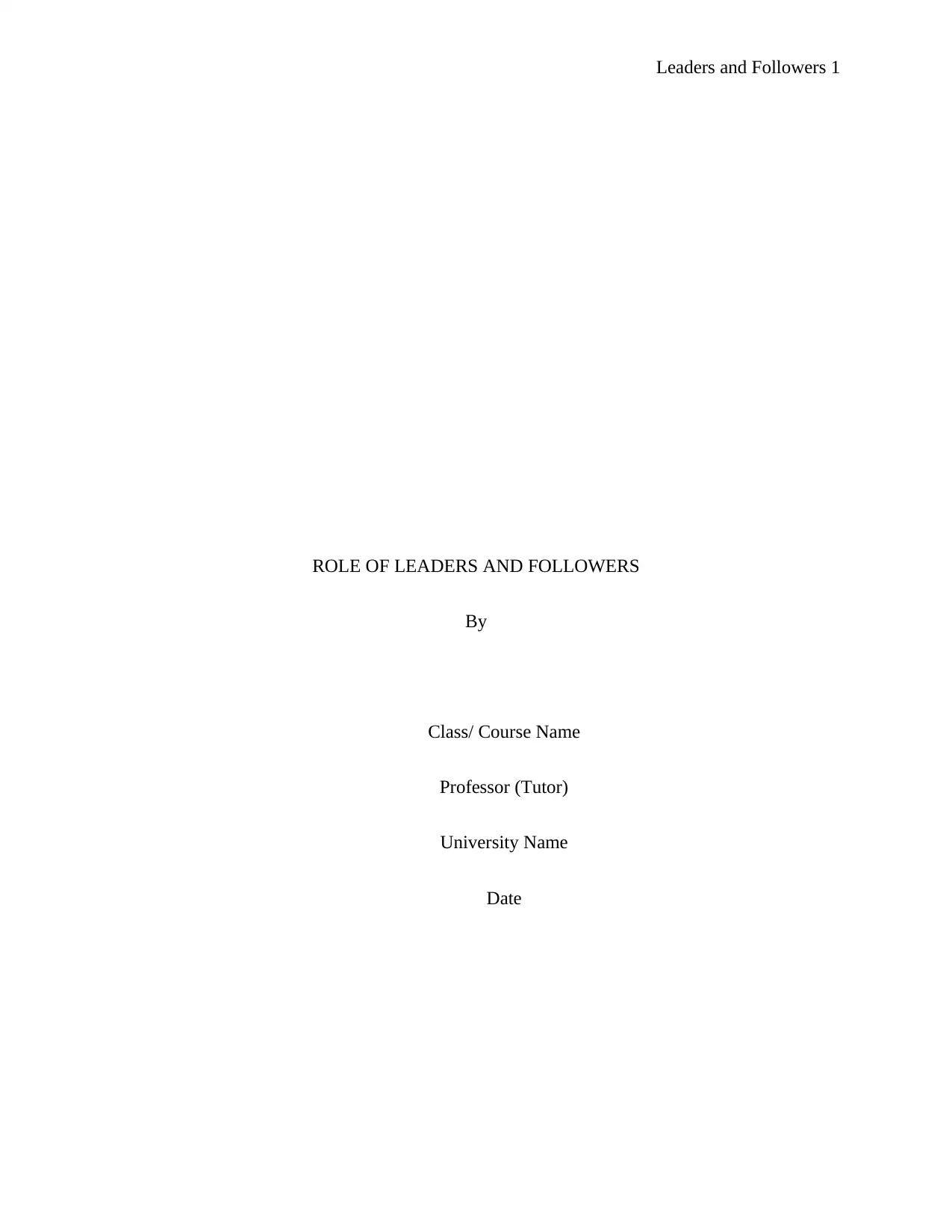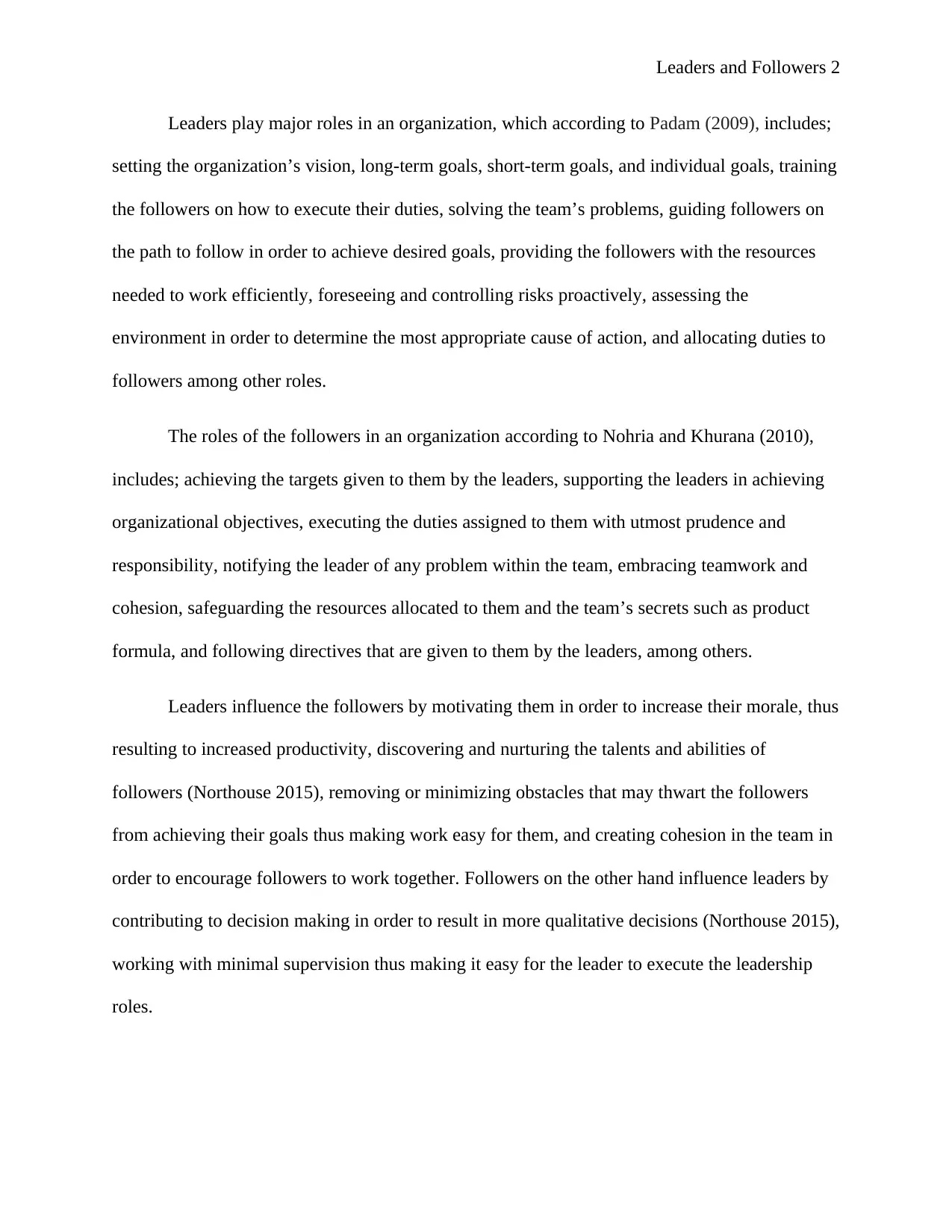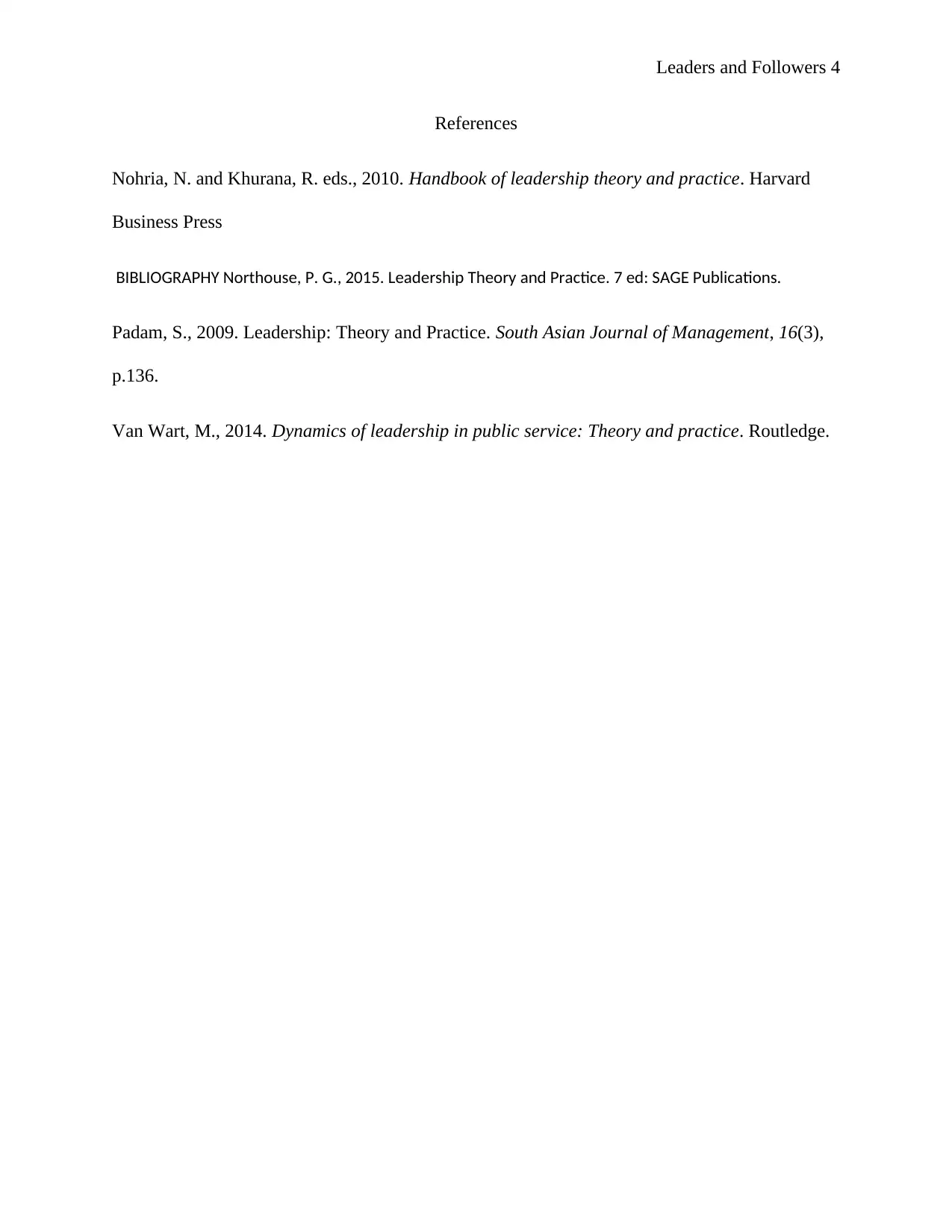KMGT 633: Leaders and Followers Roles in Organizations
VerifiedAdded on 2023/06/08
|4
|741
|188
Report
AI Summary
This report critically analyzes the roles of leaders and followers within organizations, exploring their mutual influence and the dynamics of their relationship. It details the specific responsibilities of leaders, including setting organizational vision, training followers, solving problems, and allocating resources. The report also outlines the roles of followers, such as achieving targets, supporting leaders, executing duties, and safeguarding resources. Furthermore, it examines how leaders motivate followers and foster cohesion, while followers contribute to decision-making and work with minimal supervision. The report then discusses the challenges of a dual-role situation, where a leader reports to a higher-ranking leader, using a personal example from the marketing management role at Coca-Cola. Key issues such as decision-making delays and resource allocation are addressed, along with the lessons learned, including the importance of positive leader-follower relationships, incorporating follower interests in decisions, and effective communication. The report concludes by emphasizing the critical elements for effective leadership and followership within a business context, emphasizing how leaders and followers influence each other to achieve organizational goals.
1 out of 4










![[object Object]](/_next/static/media/star-bottom.7253800d.svg)